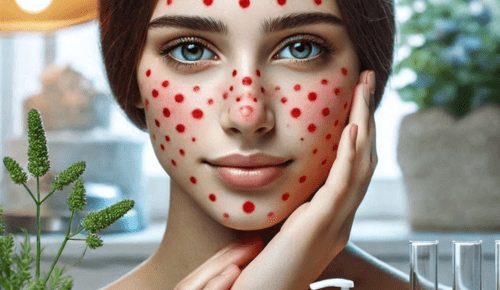Effective Strategies for Managing Rosacea

Rosacea is a chronic skin condition characterized by redness, visible blood vessels, and sometimes small, red, pus-filled bumps on the face. While there is no cure for rosacea, effective management can significantly improve the quality of life for those affected. Here, we explore practical strategies for managing rosacea and maintaining healthy, balanced skin.
Understanding Rosacea
Rosacea typically affects the central part of the face, including the cheeks, nose, forehead, and chin. It often begins as a tendency to blush or flush more easily than others. Over time, the redness can become more persistent, and other symptoms such as burning sensations, dryness (use a cream for dry skin), or swelling may develop.
Common triggers include:
- Sun exposure
- Hot or spicy foods and beverages
- Alcohol consumption
- Stress and strong emotions
- Extreme temperatures (hot or cold)
- Certain skincare products and cosmetics
Adopt a Gentle Skincare Routine
A consistent and gentle skincare routine is crucial for managing rosacea. Follow these steps to minimize irritation:
- Use a Mild Cleanser: Choose a fragrance-free, non-foaming cleanser to avoid stripping the skin of its natural oils. Avoid scrubbing the skin, which can worsen redness.
- Moisturize Regularly: Hydration helps repair the skin barrier and reduce sensitivity. Opt for a lightweight, hypoallergenic moisturizer with soothing ingredients like ceramides, niacinamide, or hyaluronic acid.
- Apply Sunscreen Daily: Sun exposure is a major trigger for rosacea flare-ups. Use a mineral-based sunscreen with zinc oxide or titanium dioxide, as these are less likely to irritate sensitive skin.
Identify and Avoid Triggers
Keeping a diary of your symptoms and daily activities can help identify specific triggers. Once you’ve identified them, take steps to minimize exposure:
- Wear a wide-brimmed hat and use sunscreen to protect against UV rays.
- Avoid hot showers and saunas.
- Reduce stress through mindfulness or relaxation techniques.
- Choose gentle, non-comedogenic makeup and avoid products with alcohol, fragrances, or harsh exfoliants.
Seek Professional Treatment
If rosacea symptoms persist or worsen, consult a dermatologist. They may recommend treatments such as:
- Topical Medications: Products containing metronidazole, azelaic acid, or ivermectin can reduce inflammation and redness.
- Oral Antibiotics: Low-dose antibiotics like doxycycline are often prescribed for moderate to severe cases.
- Laser Therapy: Intense pulsed light (IPL) treatments can help reduce visible blood vessels and persistent redness.
Adopt a Rosacea-Friendly Diet
Certain foods and beverages can trigger rosacea symptoms. Avoid common culprits such as:
- Spicy foods
- Hot beverages like coffee or tea
- Alcohol, particularly red wine
Instead, focus on an anti-inflammatory diet rich in fruits, vegetables, omega-3 fatty acids, and whole grains. Staying hydrated also helps keep your skin healthy.
Manage Stress Levels
Stress is a known trigger for rosacea. Incorporate stress-reducing practices into your daily routine, such as:
- Yoga or meditation
- Regular exercise
- Deep-breathing exercises
Be Patient and Consistent
Rosacea management takes time. Results from treatments and lifestyle changes may not be immediate, but consistency is key. Stick to your routine and give your skin time to respond to new products or therapies.
Managing rosacea effectively involves a combination of gentle skincare, trigger avoidance, professional treatment, and lifestyle adjustments. By understanding your skin’s needs and adopting these strategies, you can minimize flare-ups and maintain a healthier complexion. Always consult a dermatologist to develop a personalized management plan tailored to your specific condition. Use quality cosmetics, creams with retinol and perfumes like Yara.




